It’s in the headlines, across social media, and a growing topic of unease around the dinner table – per- and polyfluoroalkyl substances (PFAS). Residents in your community are going to have questions, so be prepared with accurate, honest answers to address their concerns.
The number of people not only aware of PFAS but actively engaged in learning more about how these “forever chemicals” are impacting the health and safety of their families and communities is quickly increasing. You have likely already been fielding PFAS-related questions from anxious residents, and if you haven’t, it’s safe to say you soon will. Now is the time to develop a plan to address inquiries with confidence using the latest reputable resources and data.
While every community faces unique challenges regarding PFAS based on location, population, and current exposure level, the need to share reliable health and safety information with the public is universal. This guide offers resources to empower municipal leaders to prepare for and develop a plan to answer common resident questions about PFAS. Understanding and managing these concerns will not only ensure the well-being of residents but foster trust and engagement to tackle PFAS head-on as a united collective.
 Question 1: Do we have PFAS in OUR community?
Question 1: Do we have PFAS in OUR community?
Before considering this first question, it’s important to have an educated basic understanding of what the broad term of PFAS encompasses, where it has been found, the risks associated, etc. As a municipality leader, establishing a trusted, knowledgeable voice that rises above the chatter is essential. A good place to start is the SEH PFAS 101 Guide, which contains an abundance of tips and resources to help you build a strong foundation of knowledge.
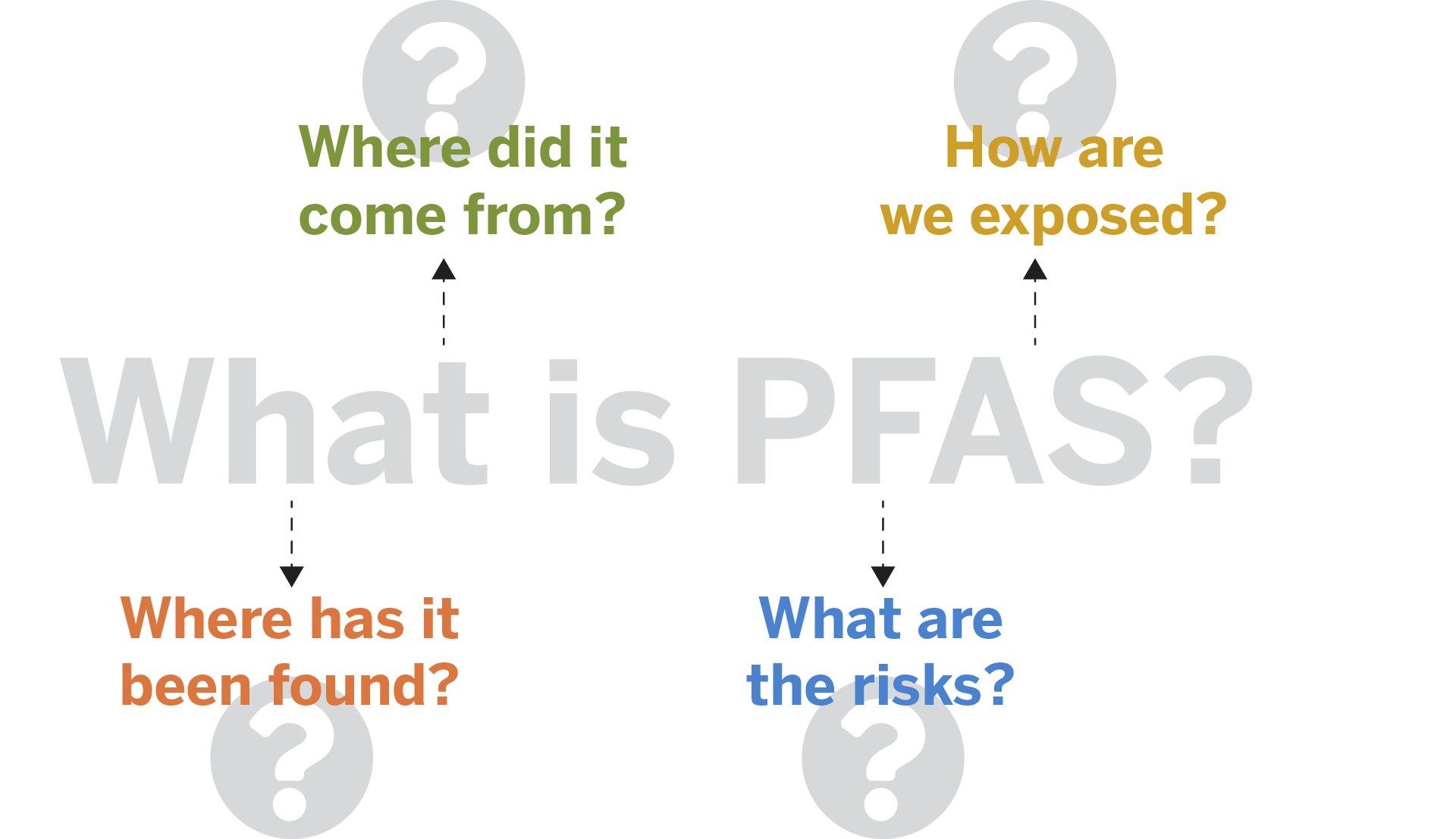
The Centers for Disease Control and Prevention (CDC) has recognized that most United States residents have been exposed to PFAS in some form – it has been found in all 50 states and in the bloodstreams of 97% of residents. So, it’s safe to say your answer to this first inquiry will be “yes.” Begin from a place of honesty by recognizing that PFAS is now everywhere.
Follow-up question: Has testing revealed any specific sources of PFAS?
Be open about what you currently know regarding local levels of PFAS pollution and ready to share steps you have taken or plan to take to identify sources. Most water companies are required to complete some form of PFAS testing, though the extent of this will likely depend on the population size. A National Primary Drinking Water Regulation (NPDWR) has been proposed by the Environmental Protection Agency (EPA) to set Maximum Contaminant Levels (MCLs) for the six common PFAS found in drinking water. Partner with your local water facility to understand current testing practices and what the results indicate so far.

One frequent source of contamination is aqueous film-forming foams (AFFFs) used by many fire departments as an extinguishing agent. These foams (known as Class B Foams) now face tighter regulations that vary by state. For example, in June of 2023, the Michigan PFAS Action Response Team updated best practices for working with and disposing of PFAS-containing foams. You will want to review the current guidelines in your state to share with residents.
Question 2: What are we doing as a community to protect ourselves or clean up any known contaminants?
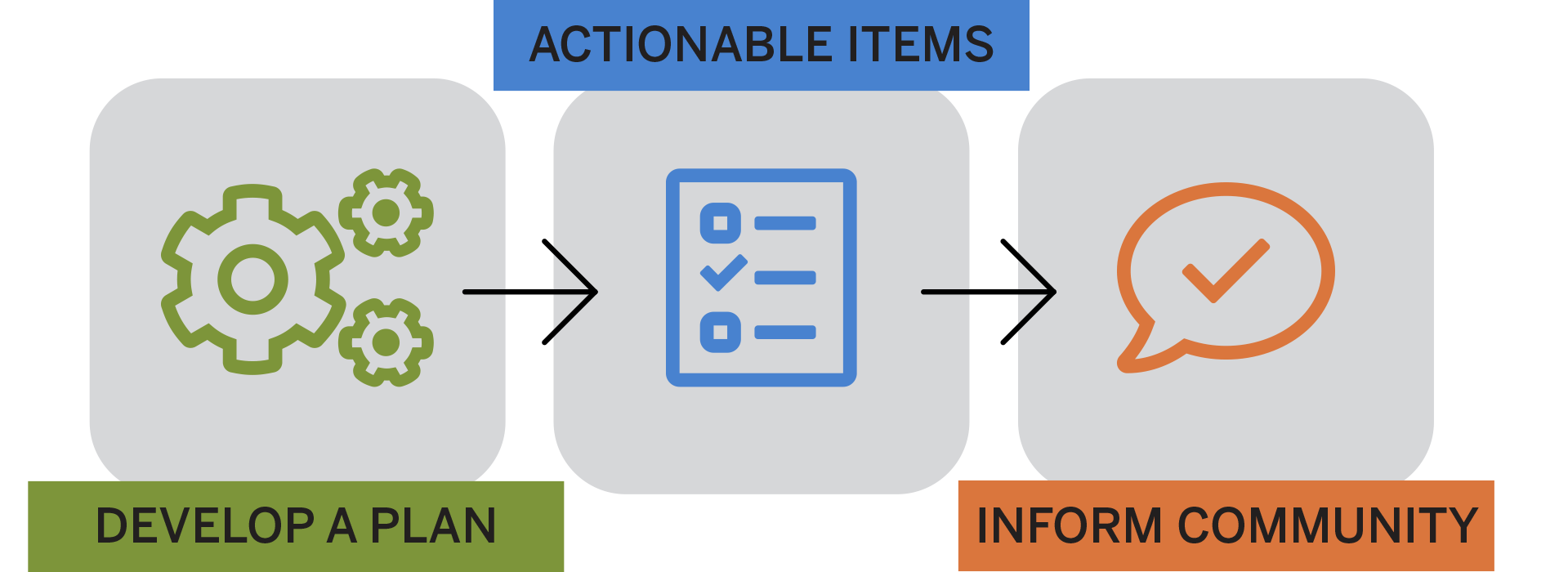
Community members will want to know you have developed a plan with actionable items to combat PFAS. This is your opportunity to highlight steps your municipality is taking to implement best practices and share additional efforts to identify potential risks. These may include:
- Improvements to your water treatment system to administer PFAS-testing practices and remove these chemicals from drinking water. (Staying up to date on the EPA’s Drinking Water Health Advisories will help guide your efforts in this area.)
- Any steps you are taking to engage and work with industries in your area that have historically used PFAS, while learning more about phase-out measures, disposal methods, and safer alternatives.
- How your wastewater management facility is combating PFAS so as not to cause further environmental exposure.
Follow-up question: Are there any treatment systems in place or plans to implement them?
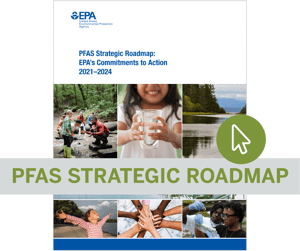 Even if you haven’t yet developed a comprehensive plan to manage PFAS at the local level, the PFAS Strategic Roadmap: EPA's Commitments to Action 2021-2024 offers resources and practices taking place at the federal level to address PFAS. Learning the goals, key actions, and research behind this plan will be helpful when developing a more localized approach to mitigation and disposal efforts. You will also want to see if your state has developed any programs to handle PFAS, such as Minnesota’s PFAS Blueprint from the Minnesota Pollution Control Agency.
Even if you haven’t yet developed a comprehensive plan to manage PFAS at the local level, the PFAS Strategic Roadmap: EPA's Commitments to Action 2021-2024 offers resources and practices taking place at the federal level to address PFAS. Learning the goals, key actions, and research behind this plan will be helpful when developing a more localized approach to mitigation and disposal efforts. You will also want to see if your state has developed any programs to handle PFAS, such as Minnesota’s PFAS Blueprint from the Minnesota Pollution Control Agency.
Monitoring and testing for PFAS regularly is an essential component of identifying possible sources of exposure and assessing relief efforts. While there is still a great deal unknown about these chemicals, using data derived from testing will play a paramount role in guiding next steps. Information is power, and regular testing of your water source and distribution system is vital to staying proactive and keeping your community safe.
Researching funding and grant opportunities could be beneficial to successfully execute testing, destruction, and remediation efforts. There may be numerous financial resources available at your state or local level, as well as federal programs, like the Emerging Contaminants (EC) in Small or Disadvantaged Communities Grant (SDC) as part of the Bipartisan Infrastructure Law (BIL).=
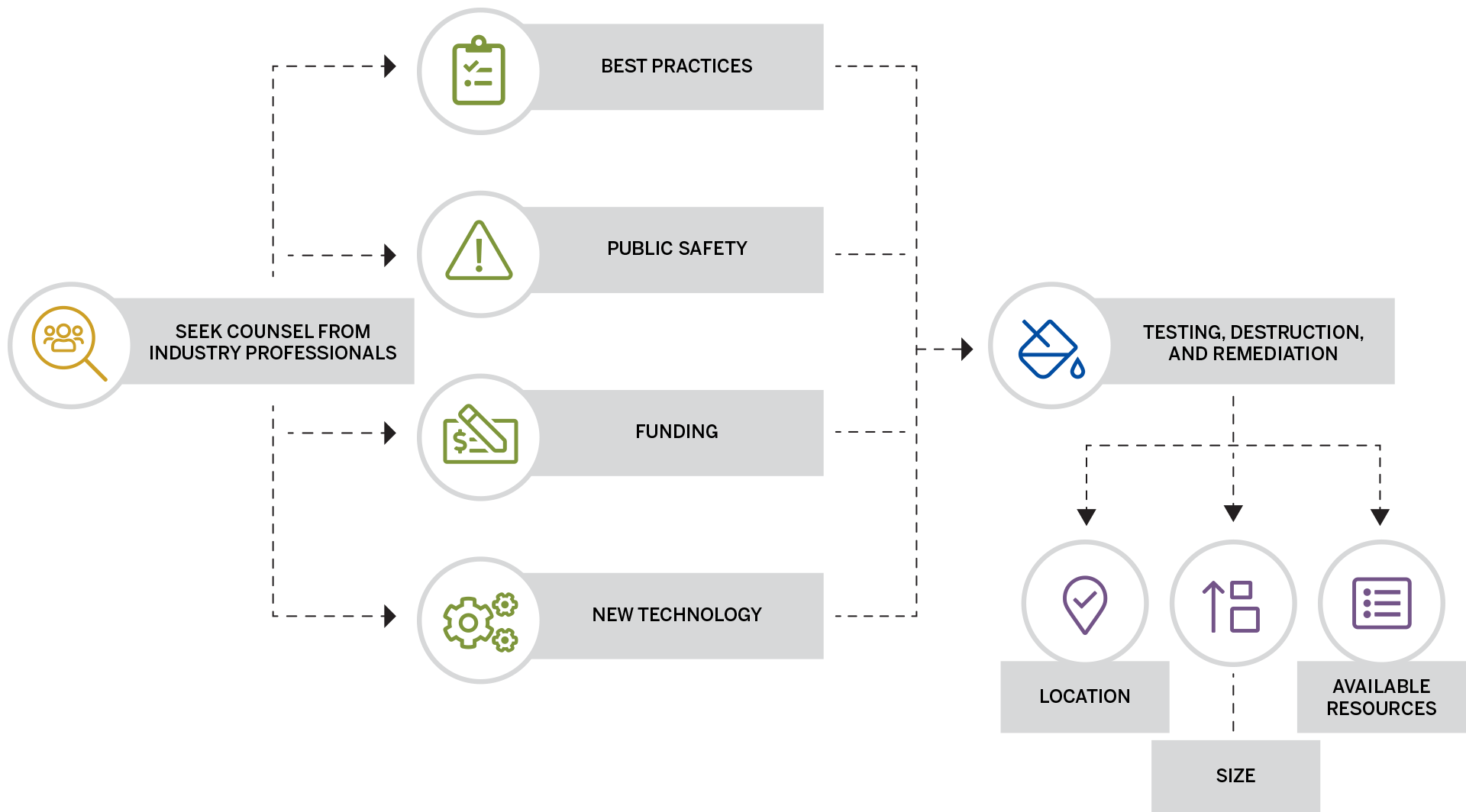
You’ll want to establish yourself as an advocate for your community in the fight against PFAS, but don’t feel as if you need to tackle this global issue alone. Seek out industry professionals for counsel on best practices, public safety, available funding, and new technology to test for and combat PFAS based on the location, size, and available resources of your community.
Question 3: Am I at risk for contamination, and what are the potential health impacts of PFAS exposure?
With PFAS found in the water we drink, food we eat, and products we use daily, it’s safe to say most residents of your community will have some level of PFAS exposure. With health and safety being the top priority, it’s important to acknowledge what you know and have yet to learn based on available health data from sources like the CDC’s National Health Biomonitoring Program and additional findings published by the EPA.
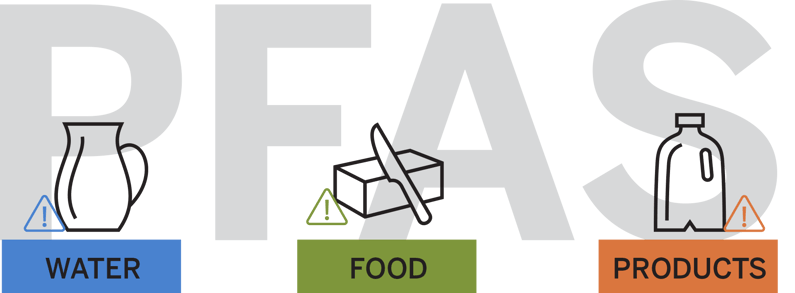
The EPA has stated that current scientific research shows a range of adverse health effects linked to PFAS exposure. While the exposure risk for most individuals is relatively low, the range and severity of these outcomes will depend on the level and length of exposure. The particular impacts of PFAS will be felt differently in each community based on location, air conditions, water quality, proximity to exposure sites, etc.

Parents of young children, older individuals, and people with preexisting health conditions or compromised immune systems may be particularly concerned about negative health outcomes. Doing your due diligence by seeking advice from local authorities, universities, environmental agencies, and health professionals will inform your plan to manage PFAS and build a reliable network to consult with as information changes.
Follow-up question: Are any health studies or monitoring programs being conducted to assess the long-term impacts of PFAS exposure on our community? If so, what are the preliminary findings?
The long-term effects of any new hazardous chemical are difficult to know right away, especially at the local level. Since PFAS is still an emerging contaminant, the amount of research and data will grow with time. If you need more local studies to draw upon, citing national and international research may be helpful to provide a base of information for residents.
The National Institute of Environmental Health Sciences (NIEHS) has conducted several studies you may wish to share with curious residents about findings thus far, including the National Toxicology Program (NTP), which used prior research to conclude PFAS negatively impacted the immune system.
Most importantly, you can provide reassurance that all available precautions to keep your community safe are taking place and that leadership is making every effort to learn more about PFAS.
Question 4: How is our community being informed and educated about PFAS risks?
Having a plan to keep residents informed about PFAS regulations and guidance is essential to establishing a trusted relationship and building support when new measures are implemented. No matter where you’re at in the development of a communication plan, reliable and timely updates need to be put in place to inform residents of developing PFAS news. Staying ahead of resident concerns by proactively sharing information as soon as possible will provide reassurance and demonstrate that you are taking this issue seriously. For example, since the EPA requires every municipality to deliver an annual Consumer Confidence Report (CCR) on the quality of their local drinking water, consider including this report in communication efforts.
Another key component of any communication plan is to provide a point of contact who can be easily reached and dependably respond to resident questions. Accessible ways to connect with this person include an online contact form, direct number to call or text, open office hours, or virtual community forums.
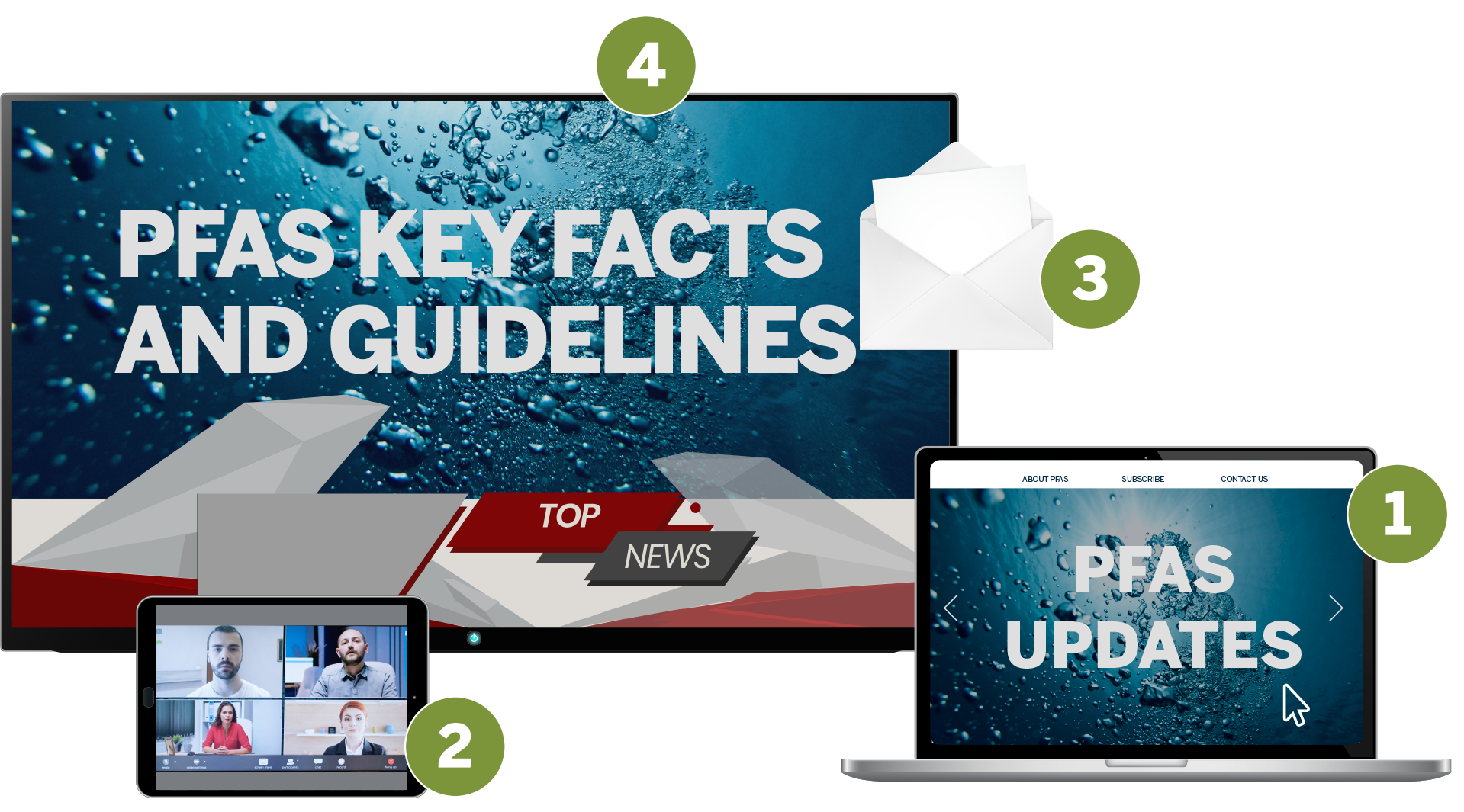
Your methods of information distribution will depend on the needs of your community. Possible vehicles to communicate with residents include:
- Building a webpage on a community website that is regularly updated when PFAS information changes.
- Holding community meetings either virtually, in-person, or both and communicating the times/dates of those effectively. Consider inviting local experts from health, environmental, or academic institutions to participate in Q&A discussions.
- Mailing out informational brochures in several languages.
- Utilizing local news broadcasts or papers to highlight key facts and guidelines.
Follow-up question: Are there any ongoing outreach programs or resources available to raise awareness and provide guidance on minimizing exposure?
This is an opportunity to rely on your connections with local organizations and subject matter experts to develop regular outreach programs, activities, and classes. Whether it’s a series of lectures or mailing out guides on ways to mitigate exposure through easy-to-implement daily practices, facilitating the education and engagement of your residents will build support for the long-term course of combating PFAS.
Even when there is more to learn, delivering clear, honest, and timely communication will go a long way toward establishing trust with stakeholders. For further information on ways to connect with your community, you may refer to the SEH guide: 5 Ways to Engage Stakeholders and Get Your Community Behind a Project.
Question 5: What can I, as a citizen, do to help?
The wonderful thing about establishing open communication is it builds a connected community where members feel activated, engaged, and eager to get involved. In short, they care. Because of this, offering residents some practical steps they can take in their daily lives to minimize exposure will provide a much-needed sense of control and choice while yielding long-term benefits.

Here are seven easy steps residents can take to prevent the spread of PFAS:
- Avoid non-stick cookware
- Look closely at your dental floss
- Make your own popcorn
- Beware of stain-resistant coatings
- Think twice before you hike
- Bring your own to-go food containers
- Read. The. Label.
Follow-up question: Are there any volunteer opportunities, community engagement initiatives, or platforms for citizen input?
Residents will have questions and ideas about combating PFAS, and when they do, encourage them to submit them to your office without delay. Establishing that no inquiry is too small or ill-informed will go a long way toward building an open dialogue. As mentioned earlier, make sure there is an easy, accessible way to do this.
While you should certainly set an example by partnering with local and state government officials to support stricter regulations for PFAS use and disposal in your area, citizens make powerful advocates as well. Encourage your residents to appeal to local businesses and industries that may play a larger role in PFAS distribution and improper disposal. Find out if local environmental or non-profit groups may already be doing this, and provide that information to citizens eager to get involved.
Consult with your network of academic institutions, environmental agencies, and health organizations about opportunities to implement testing and monitoring programs. Let them know that residents may be interested in participating, and communicate any opportunities with your community members.
And remember, an engaged community starts with you. By taking steps to build goodwill, such as distributing proper disposal guides and organizing events to collect contaminated material, you are setting your community up for future success.
Challenging? Yes – Impossible? No
PFAS is a daunting issue to tackle, so don’t try to do it alone. Our experts are here to listen and help build an actionable plan based on the unique needs of your community. Together, PFAS is something we can manage, mitigate, and eventually overcome. Reach out to our team and get the help your community deserves.
About the author

Miles Jensen is a senior project manager and water engineer who understands the importance of clean water and the critical role our public facilities play in the process. Miles specializes in the design and construction of water treatment plants, specifically in advanced water treatment facility process design, construction management, and plant start-up.

.png?width=113&name=SEH_Logo_RGB%20(1).png)









